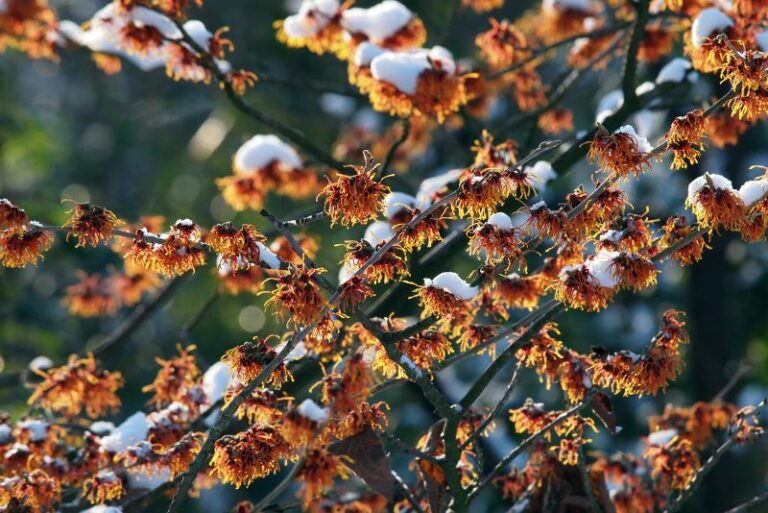How to Grow Callicarpa: A Comprehensive Guide
The alluring callicarpa, with its colorful berries and graceful foliage, is a jewel in any gardener’s crown. Also known as the beautyberry, this ornamental shrub adds a splash of vibrancy to your garden, especially during the dull months of winter. Understanding the intricacies of callicarpa care from planting to pruning is crucial for harnessing the full potential of this remarkable plant. This comprehensive guide is tailor-made for gardeners looking to elevate their landscaping game with the captivating beauty of callicarpa.
Native to the southeastern United States and East Asia, callicarpa is a popular choice among landscape enthusiasts for its clusters of vibrant purple, white, or pink berries. Whether you’re aiming to attract wildlife or simply enhance the aesthetic of your garden, the beautyberry’s versatility shines through.
But what does it take to cultivate this unique plant successfully? This guide is designed to walk you through the entire callicarpa care process, from selecting the ideal planting location to ensuring long-term health and beauty.
Choosing the Right Location for Callicarpa

Callicarpa, like any other plant, has specific preferences when it comes to where it grows. Understanding and catering to these preferences is vital for its well-being.
Sunlight Requirements
Callicarpa thrives in full sun but can tolerate partial shade. A location that receives at least 6 hours of direct sunlight is optimal for prolific berry production and overall plant health. In warmer climates, a spot with morning sun and afternoon shade can protect the plant from excessive heat.
Soil Preferences
Moist, well-drained soil is a non-negotiable for the beautyberry. It prefers slightly acidic to neutral soil with a pH range of 6.0 to 6.5. Amending heavy clay or sandy soils with organic matter helps improve drainage and fertility, creating the perfect growing environment for callicarpa.
Planting and Propagating Callicarpa
Getting callicarpa off to a good start is the key to a successful garden addition.
Best Planting Season
Fall is the ideal time to plant callicarpa, allowing the roots to establish before the stress of summer heat. In cooler regions, early spring planting can also be successful. Avoid planting during the heat of the summer when the plant is most vulnerable.
Propagation Methods
The beautyberry can be propagated from seeds, softwood cuttings, or by layering. Seeds can take a long time to germinate, so patience is important. Softwood cuttings taken in summer root relatively easily. Layering, where you encourage stems to root while still attached to the mother plant, is another successful propagation method.
Watering and Feeding Your Callicarpa
Proper watering and nutrition are critical for the health and vigor of your callicarpa plant.
Watering Techniques
Water your callicarpa regularly to keep the soil consistently moist but not waterlogged. Avoid overhead watering, especially in the late summer and fall when the plant is setting its berries, as excess moisture can lead to disease and cause the berries to drop prematurely.
Fertilization Needs
In spring, apply a balanced slow-release fertilizer according to package instructions. If the plant is growing in fertile soil with plenty of organic matter, additional fertilization may be unnecessary. Always water the plant after fertilizing to ensure the nutrients reach the root zone.
Pruning and Maintaining Callicarpa
Pruning keeps your callicarpa healthy and looking its best but must be done judiciously.
Pruning Tips for Healthy Growth
The best time to prune callicarpa is in early spring before new growth appears. Remove dead, diseased, or crossing branches to encourage a strong framework and good air circulation. Over-pruning can reduce berry production, so it’s important to prune lightly.
Common Pest and Disease Management
Callicarpa is generally resistant to diseases and pests, but it may occasionally be affected by powdery mildew or leaf spot. Good air circulation and sanitation practices can help prevent these issues. If a problem does arise, treat the plant with a fungicide, following the manufacturer’s instructions.
Enhancing Curb Appeal with Callicarpa
The beautyberry doesn’t just look good; it offers design possibilities that can transform your garden.
Design Ideas Incorporating Callicarpa
Plant callicarpa en masse for a breathtaking display of color in the fall and winter. Use it as a focal point in a mixed border, or as part of a native planting scheme. Its berries are also great for cutting and using in floral arrangements or as a natural bird feeder.
Conclusion
Callicarpas are a delightful addition to any garden, with their richly colored berries and easygoing nature. By following the information provided in this guide, you can ensure that your callicarpa thrives, providing you with years of enjoyment and beauty. Remember that like any garden plant, callicarpa needs care and attention, but the rewards are well worth the effort.
Gardening is both an art and a science, and each plant we cultivate offers us a new lesson in patience, observation, and appreciation. Take the knowledge you’ve gained here and apply it to your gardening endeavors. Your callicarpa will thank you with lively, colorful displays that will be the envy of the neighborhood. Happy gardening!






